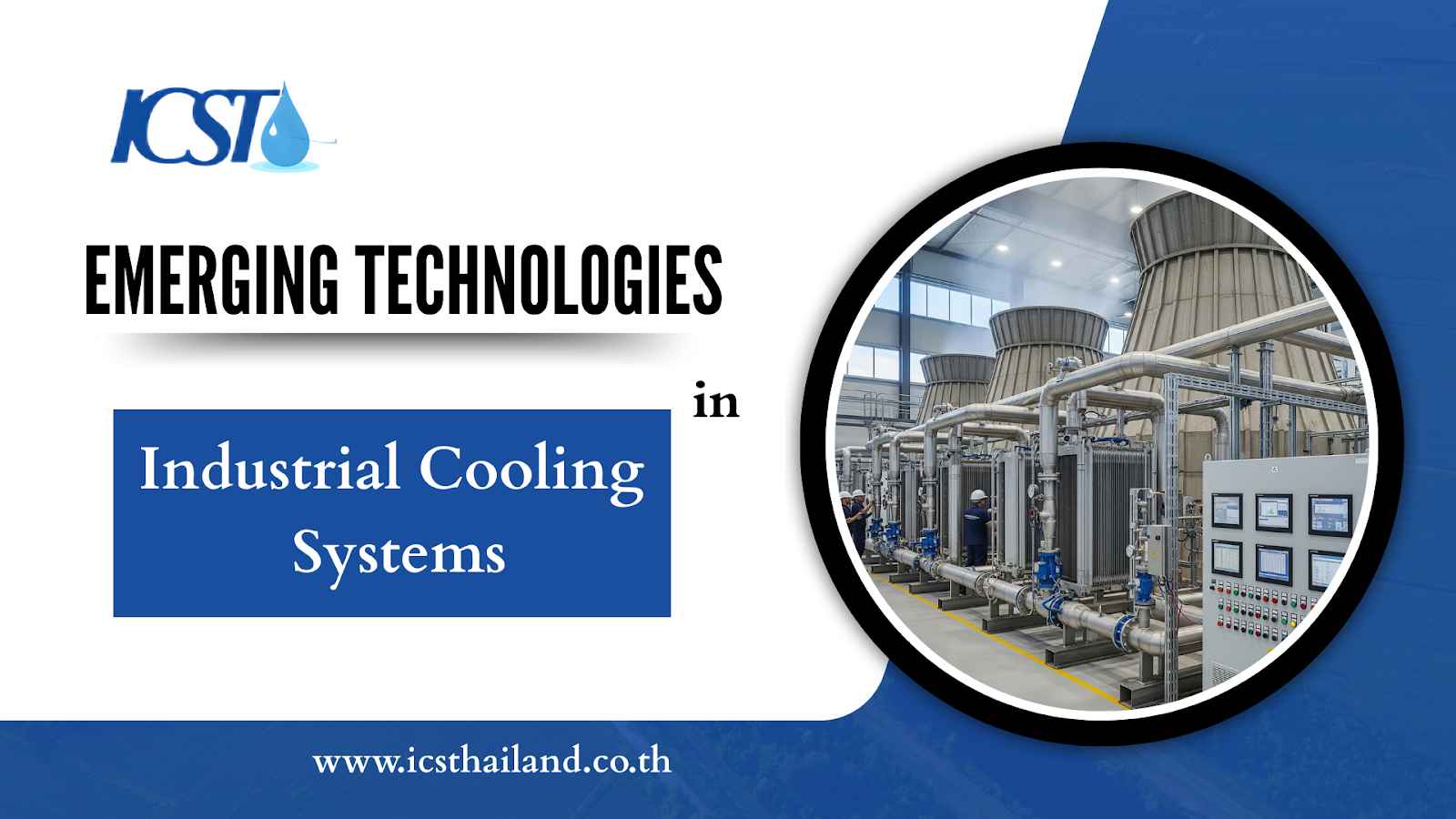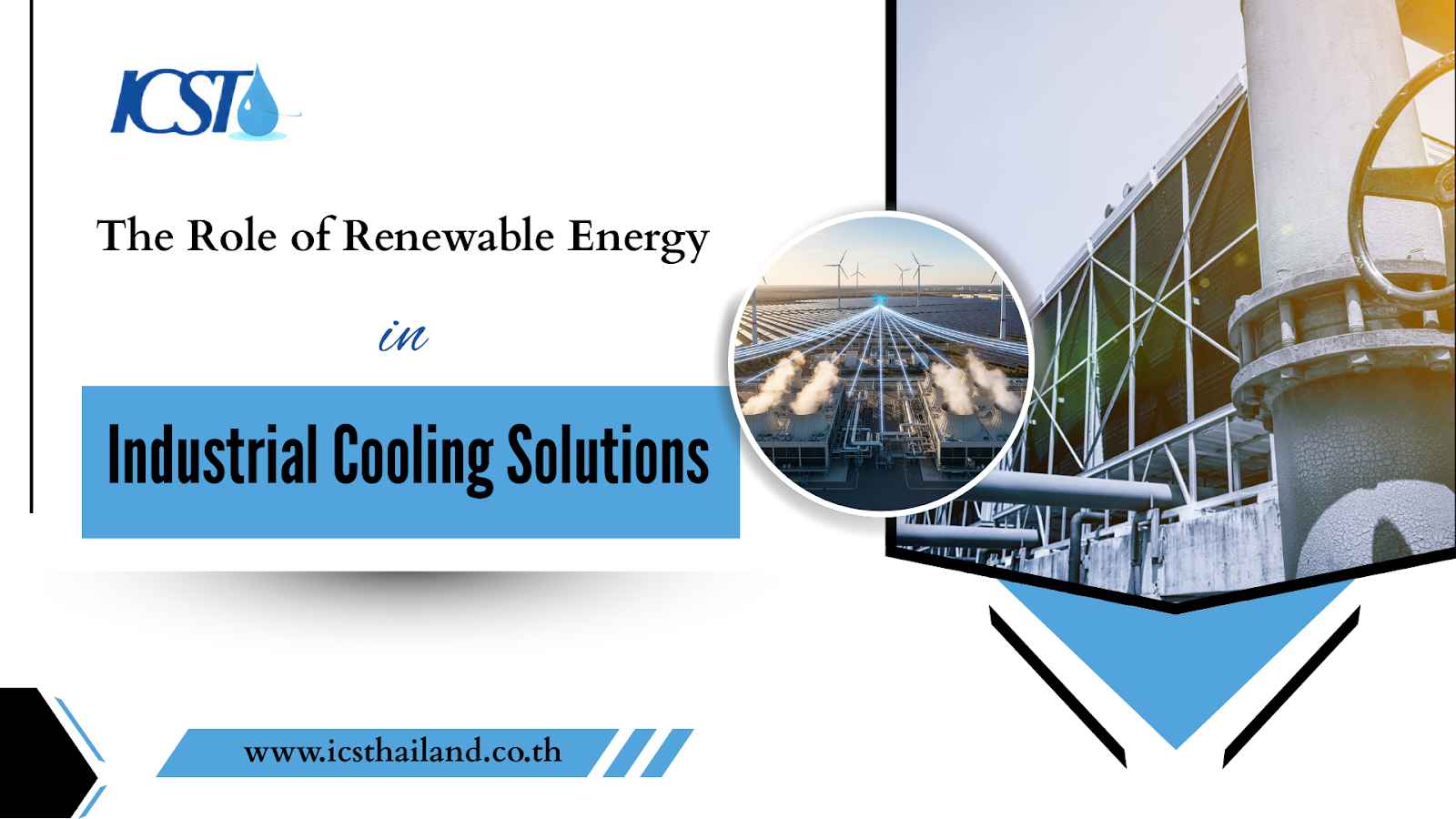Efficient heat rejection isn’t just a supporting player in industrial and commercial operations; it’s the very backbone of their success. But when it comes to selecting the right cooling tower, a fundamental fork in the road appears: Do you opt for a factory-assembled ‘package’ unit or a custom-built ‘field-erected’ behemoth?
Selecting the right cooling tower often comes down to a fundamental choice between package cooling towers and field erected cooling towers. So, which option is the best? By breaking down their differences and exploring their unique applications, this guide will help you make an informed decision tailored to your specific needs.
Table of Contents
ToggleThe Basics of Cooling Towers
Evaporative Cooling towers play a critical role in removing waste heat from industrial or commercial processes by cooling water or other working fluids. This helps maintain essential operating temperatures for processes, machinery, and facilities.
Cooling towers come in various sizes and configurations, ranging from compact rooftop units to massive field-constructed structures. Their designs broadly fit into two main categories:
- Package cooling towers: Factory-assembled cooling towers, on the other hand, are pre-fabricated and arrive on-site as complete, ready-to-install units or large modules. This makes them a more practical and often faster choice for smaller applications.
- Field erected cooling towers: Field-erected cooling towers are tailored systems, constructed directly on-site with specially designed components. This allows for unparalleled flexibility in design and construction, tailoring the tower precisely to the site’s unique demands.
Generally speaking, package type cooling towers are well-suited for commercial buildings, office complexes, and institutional applications where space might be a premium and cooling loads are moderate. Conversely, field-erected towers are the titans designed for the immense demands of power plants and large-scale industrial applications.
Types of Cooling Towers
Cooling towers come in all shapes and sizes, from modest rooftop units to towering rectangular or hyperboloid structures that dominate the skyline. They come in various types, such as by airflow pattern (counterflow or crossflow) or assembly method (factory-assembled vs. field erected).
Understanding Counterflow and Crossflow
- Counterflow towers optimize heat transfer by ensuring water and air move in opposite directions.
- Crossflow towers involve air crossing perpendicularly to falling water, offering easier maintenance and simpler designs.
Whether your cooling tower uses a counterflow or crossflow design can impact performance, but the distinction between package vs. field erected cooling towers has the most immediate implications for selection.
The Assembly Debate
Both types of cooling towers have unique strengths. Let’s explore how package towers and field erected towers differ and where each fits best.
Understanding the Package Cooling Tower
What is a Package Cooling Tower?
A package cooling tower is a prefabricated unit, fully assembled or shipped as modular segments, ready for rapid onsite installation. These towers are typically constructed from materials like fiberglass-reinforced plastic (FRP), galvanized steel, or stainless steel to ensure durability.
Package cooling towers usually come in standard configurations, including both counterflow and crossflow designs, and are engineered to serve smaller to medium-scale heat loads efficiently.
Key Advantages of Package Cooling Towers
- Fast Installation
One of the most compelling advantages of package cooling towers is their rapid deployment. Because they arrive largely pre-assembled, on-site labor and construction time are significantly reduced.
- Cost-Effectiveness
For small to medium-sized projects, package units often present a more cost-effective upfront investment. This is due to several factors: less reliance on highly skilled on-site labor, the efficiencies gained from factory production lines, and reduced site management overheads.
- Consistent Quality
For small to medium-sized projects, package units often present a more cost-effective upfront investment. This is due to several factors: less reliance on highly skilled on-site labor, the efficiencies gained from factory production lines, and reduced site management overheads.
- Compact Footprint
Package cooling towers are generally designed with a more compact footprint, making them an ideal solution for sites with limited available space, such as urban commercial buildings or facilities with constrained property lines.
- Reduced Site Disruption
With much of the assembly happening off-site, the installation of a package unit leads to considerably less noise, dust, and general construction activity at your operational location. This is a significant benefit for active facilities or those located in sensitive areas.
Potential Disadvantages of Package Cooling Towers
Limited Capacity
While package units are efficient for many applications, single units do have inherent size limits due to transportation constraints. For very large heat rejection loads, multiple package units might be required, which can complicate piping and controls.
Less Customization
Unlike their field-erected counterparts, package cooling towers offer limited design flexibility. While some options are available, fundamental changes to dimensions or specific performance characteristics are generally not possible, as they are standardized products.
Shipping Logistics:
Even though they are “package” units, larger modules still require careful planning for transport, including considerations for oversized load permits and specialized rigging equipment.
Ideal Applications for Package Cooling Towers
Package cooling towers are the go-to choice for a variety of applications where moderate cooling loads, quick installation, and a smaller footprint are priorities. This includes:
- Commercial office buildings and food processing plants
- Hospitals and institutional facilities
- Small manufacturing plants
- Projects with tight timelines or minimal available space
Delving into the Field Erected Cooling Tower
Field erected cooling towers are typically larger and more complex than package type cooling towers, demanding more time and effort for their design and construction. These are the giants of the cooling world, meticulously crafted on-site to meet the most demanding specifications.
What is a Field Erected Cooling Tower?
A field erected cooling tower is constructed onsite, using custom engineering and tailored components. These towers are built to meet large and complex heat rejection needs and can feature modular designs for flexibility.
Field erected cooling towers often use materials like wood, concrete, or steel, selected based on specific project requirements and environmental conditions.
Key Advantages of Field Erected Cooling Towers
- Tailored Customization
This is perhaps their most significant advantage. Field-erected towers can be engineered from the ground up to precisely meet unique cooling needs, integrate with existing infrastructure, and conform to highly specific site layouts or challenging environmental conditions.
- High Heat Rejection
Their ability to be built to virtually any size means field-erected towers can handle the largest heat loads imaginable. They are the only viable option for massive industrial processes, power plants, and chemical complexes that generate tremendous amounts of waste heat
- Scalable Flexibility
Their modular design allows for the addition or removal of cells as cooling demands change over time. This inherent flexibility means a field-erected tower can grow with your operation or be adjusted to different loads, offering a future-proof cooling solution.
- Durability in Extreme Conditions
Field-erected cooling towers are built to handle extreme weather conditions. They can operate efficiently in severe cold, high winds, and seismic activity. Their robust, custom construction also withstands corrosive industrial environments..
Potential Disadvantages of Field Erected Cooling Towers
While offering significant advantages, field-erected towers also come with certain drawbacks:
- Longer Installation Time: The construction process for a field-erected tower is considerably longer and more complex than installing a package unit, requiring extensive on-site labor and project management.
- Higher Upfront Cost: The custom design, extensive on-site labor, specialized equipment, and longer construction timelines typically result in a higher initial capital expenditure.
- Increased Site Disruption: The extended construction period means more noise, dust, heavy equipment movement, and general disruption at the project site, which needs to be carefully managed, especially in operational facilities.
- Greater Reliance on On-Site Labor & Expertise: The success of a field-erected project heavily depends on the availability and expertise of skilled on-site labor for assembly and quality control.
Ideal Applications for Field Erected Cooling Towers
Field-erected cooling towers are the champions for applications demanding the highest cooling capacities and ultimate design flexibility. These include:
- Power Generation Plants: Coal, natural gas, nuclear, and geothermal power plants require massive heat rejection capabilities.
- Petrochemical and Chemical Processing Plants: Industries with continuous, high-heat processes.
- Steel Mills and Metal Processing: Where incredibly hot processes need rapid and consistent cooling.
- Large-Scale HVAC for Airports, Convention Centers, and Stadiums: Structures with enormous cooling demands that cannot be met by multiple package units.
Making the Right Choice
Choosing between a package and a field-erected cooling tower is a strategic decision that impacts not just initial costs, but long-term operational efficiency and reliability. Here are the critical factors to weigh:
Heat Rejection Capacity
This is often the first and most defining factor.
- Low to Moderate Loads: Package units are generally sufficient and more economical.
- High to Very High Loads: Field-erected towers are almost always the necessary choice due to their scalability.
Project Budget and Lifecycle Cost
Consider not just the initial purchase price, but the total cost of ownership over the tower’s lifespan.
- Package Towers: Often lower upfront costs, faster ROI due to quicker commissioning.
- Field-Erected Towers: Higher initial investment, but potentially lower long-term operating costs (due to customization for efficiency) and longer lifespan with proper maintenance.
Project Timeline
Project Timeline
Time is money, and the installation speed varies drastically.
- Package Towers: Offer rapid deployment, crucial for fast-track projects or urgent replacements.
- Field-Erected Towers: Require significantly longer planning, design, and construction phases. If you have a tight deadline, this could be a limiting factor.
Site Constraints and Logistics
The physical characteristics of your site play a huge role.
- Limited Space: Package units are ideal due to their compact footprint.
- Accessibility: How easily can large modules or individual components be transported to and assembled on your site? Are there height or weight restrictions for cranes? Field-erected towers offer more flexibility here, as components are smaller.
- Environmental Regulations: Local noise ordinances, visual impact concerns, or specific material requirements might influence your choice.
Customization and Performance
If your cooling requirements are fairly standard, a package unit will likely suffice. If you have highly specific temperature targets, unusual water quality challenges, extreme ambient conditions, or unique integration needs, the customization offered by a field-erected tower becomes invaluable.
Durability and Environmental Factors
Consider the operating environment: Is it corrosive? Prone to extreme temperatures or high winds? Field-erected towers, custom-built with specific materials, can offer superior resilience. Think about long-term material degradation and maintenance needs.
Erected Cooling Towers Maintenance
Regular maintenance is not merely a suggestion; it’s absolutely essential to ensure optimal performance, extend the lifespan, and safeguard the significant investment in new cooling towers.
Key maintenance tasks include:
- Cleaning and Inspecting the Fill Media: Over time, fill media can accumulate scale, algae, or debris, hindering air-water contact and reducing efficiency. Regular cleaning and inspection are vital to ensure unobstructed airflow and efficient heat transfer.
- Checking and Replacing Drift Eliminators: Drift eliminators prevent water droplets from escaping the tower with the airflow. Damaged or fouled eliminators lead to increased water loss and potential environmental concerns.
- Monitoring Water Quality and Flow Rates: Consistent monitoring of water chemistry is crucial to prevent scaling, corrosion, and biological growth, including the proliferation of harmful bacteria like Legionella.
- Inspecting Structural Integrity: Given their size and exposure to elements, regular checks of the structural components (beams, columns, fan deck) for signs of wear, corrosion, or damage are paramount.
Conclusion
Selecting the right cooling tower is no simple task—it’s about finding the perfect fit for your specific needs. To make the best choice, consider key factors like your project’s heat rejection requirements, budget, timeline, and any site limitations. With a thorough evaluation of these details, you can ensure optimal performance and efficiency for your system.To make an informed decision, consult cooling system experts like ICST. They have the expertise to design and recommend the best solution customized for your unique needs. Contact our team today for a tailored consultation and take the next step toward optimizing your cooling system.








